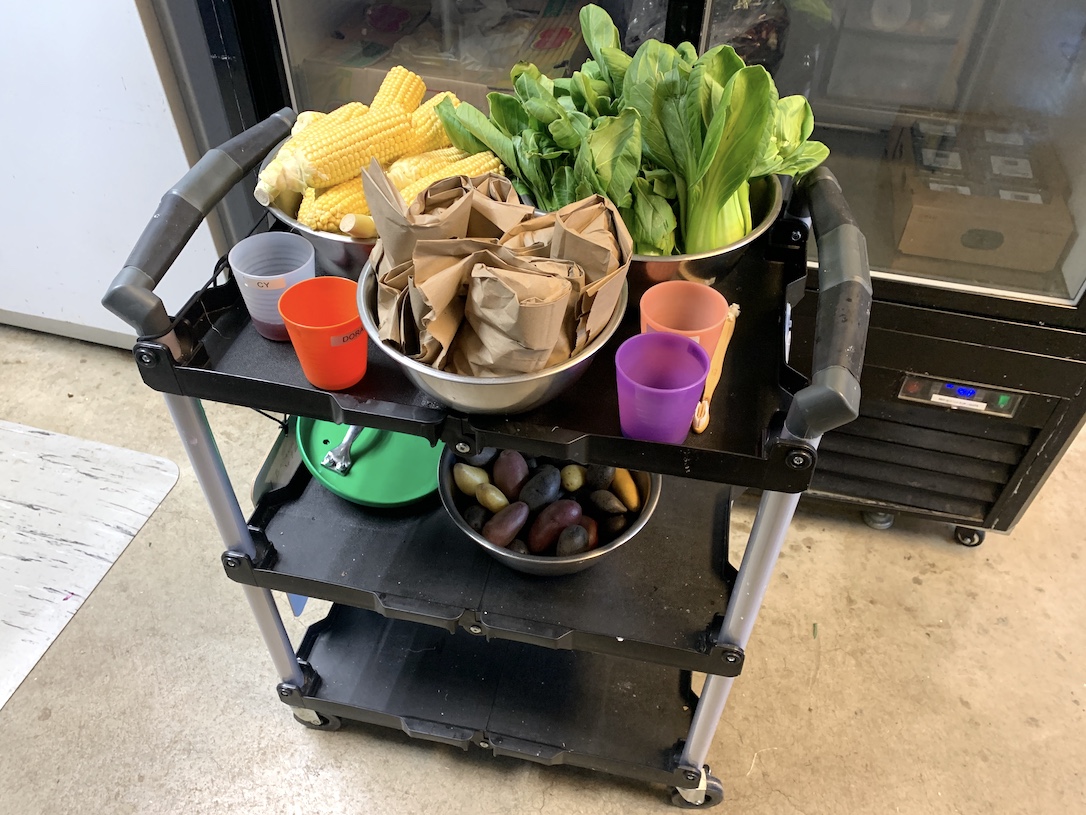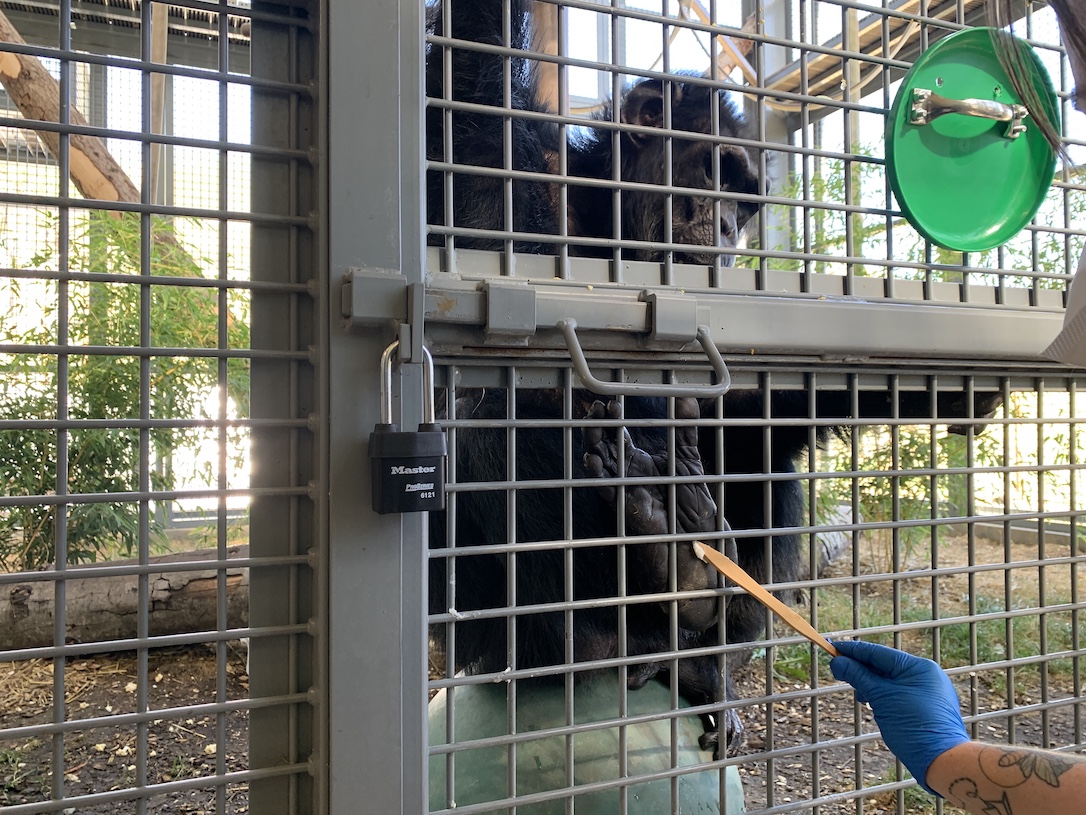More of your questions answered! (see Part I here and an additional answer here)
How do you administer their medications?
The chimps take a number of different medications for both acute and chronic conditions. Most medications are mixed with smoothie, juice, or Gatorade and served to the chimps in a cup through the mesh. This is the easiest way to make sure each chimp gets the correct medication and to ensure that they took the entire dose. Each morning, the person serving as 2nd Staff is responsible for preparing medications in labeled cups, which they then set on trays to be served along with their meals.
Some of these medications are nearly tasteless while others have a bitter or metallic flavor that cannot be covered up by any amount of juice, in which case we will try things like yogurt or honey. For some drugs, we’ve learned the only way to get the chimps to take them is to have them microencapsulated at a specialized compounding pharmacy. This is a process in which the medication is prepared in tiny particles which are then covered in a tasteless coating – imagine a bunch of Advil tablets but 1/500th the size. The microencapsulated drug can then be mixed into a yogurt or other food without throwing off the taste. It’s expensive but worth every penny when a sick chimp is reluctant to take their meds.
The chimps all differ in how easily they will take medications. For Negra, we go straight for the pineapple coconut juice – she generally won’t take meds in anything else. Gordo is similarly stubborn. He will even spit all of the liquid out onto the floor or a piece of cardboard, sift out any undissolved medication, and slurp it back up. And if he senses too much undissolved medication, he will spit it right back in your face.
Most of the chimps allow us to hold the cup and pour the juice or smoothie into their mouths, but some insist on holding the cup themselves. Burrito is one who must hold his own cup and when he’s done, he delights in letting it drop and even throwing it down to the ground. Others, like Honey B, politely wait for us to come back and take it from them so as not to cause a fuss. One time I got sidetracked after giving Cy his cup and when I returned a couple minutes later, he was still holding it up and waiting for me to collect it.
Some medications are given topically, as in the case of antiseptics for wounds or even lotions or salves for dry, cracked skin. For these, we encourage the chimps to cooperate through positive reinforcement training.
The most difficult time to give medications is in the days following a procedure, when the chimps are still recovering from anesthesia. Unfortunately, this is often the most critical time to give drugs like analgesics and antibiotics. We make sure to give long-acting injectable drugs while they are still in the clinic, but eventually we have to beg and plead for them to take them orally. We will try anything. Some of you may remember Burrito’s late night medication-stuffed bagels. There is no better sense of accomplishment than when a sick chimpanzee finally takes the medication they need to recover.
Are the chimps on any type of birth control?
Yes, all of the females that regularly cycle, with the exception of Annie, are given hormonal birth control each morning. One reason to give birth control is, as you might have guessed, to prevent pregnancy – we are doing this for the females in the newly integrated group until we can see who copulates and/or confirm that the males are still sterile from the vasectomies they were given years ago. So far it’s still just Terry and Dora copulating on occasion, but you can’t be too careful. But there are other medical reasons to administer birth control hormones. Jamie, for example, was put on birth control to suppress the normal anogenital swelling associated with her cycle, which we worried might increase the pain and discomfort of her anal fistulas. Jody was placed on birth control due to a uterine fibroid and abnormal menstrual bleeding.
Of course, birth control isn’t the only medication we administer on a daily basis. Some chimps, like Burrito and Cy, take medications to manage their heart disease. Others, like Foxie and Negra, take medications to manage pain associated with arthritis. Just like us, the list of medications grows longer as they grow older. This morning, Anna prepared 29 different medications and supplements for our 16 chimpanzees – and that was just the a.m. dose!












